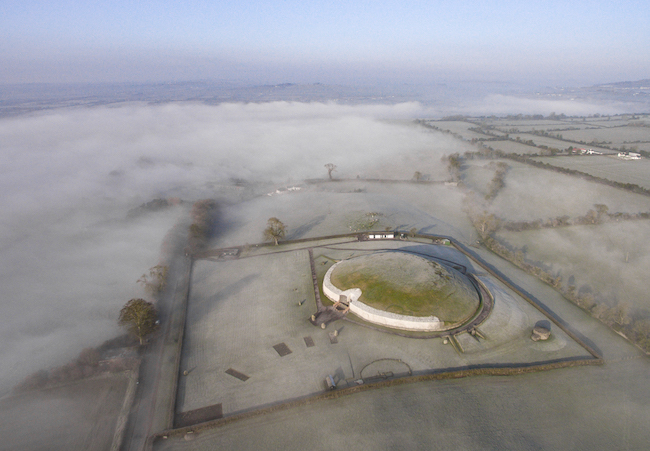Trinity researchers have led an “extraordinary” archaeological discovery that has discovered first-degree incest at the heart of Newgrange – one of Ireland’s most famous monuments.
A team of archaeologists and geneticists, led by academics from Trinity, has revealed new genetic information from an adult male buried in Newgrange that suggests he was among a ruling elite similar to inbred Inca god-kings and Egyptian pharaohs.
The findings, published in international journal Nature today, are startling – one archaeologist involved in the study called them “extraordinary”, while its first author said she’s “never seen anything like it” – and represent a major breakthrough in our understanding of neolithic Ireland, and of the 5,000-year-old Newgrange.
Analysis of ancient Irish genomes carried out by the researchers suggests that a man buried in Newgrange’s passage tomb belonged to a dynastic elite, with first-degree inbreeding that suggests he may have been a member of a “deified royal family”.
According to the research team, the only people in history for whom inbreeding was socially acceptable were elites, who separated themselves from the general population by breaking the taboo on incest.
The project also unearthed a web of distant familial relations between the man buried in Newgrange and others buried in similar passage tombs across the country – including in Carrowmore and Carrowkeel in Co Sligo.
Remarkably, the results align with a local myth, first recorded in the 11th century, that tells of a builder-king who restarted the daily solar cycle by sleeping with his sister.
As well as uncovering ancient incestuous traditions, the researchers – whose genome survey stretched over two millenia – found the earliest diagnosed case of Down Syndrome on record, in Poulnabrone portal tomb in Co Clare.
Genomes from Irish hunter-gatherers – who, the study found, were replaced gradually by farmers who came to Ireland later and built monuments around the country – also showed that the earliest Irelanders had a genetic imprint that shows prolonged island isolation.
This, researchers say, fits with what we know about prehistoric sea levels after the Ice Age: Britain maintained a land bridge to mainland Europe after the retreat of the glaciers, while Ireland was separated by sea. This means its small early populations must have arrived in primitive boats.
In a press statement, Trinity’s Dr Lara Cassidy, the first author of the study, said she had “never seen anything like it”, referring to the incest revealed by the study. The study’s analysis “allowed us to confirm that his parents were first-degree relatives”, she said.
Cassidy added: “It seems what we have here is a powerful extended kin-group, who had access to elite burial sites in many regions of the island for at least half a millennium.”
Prof Dan Bradley, a professor of population genetics in Trinity, said the “auspicious location of the male skeletal remains is matched by the unprecedented nature of his ancient genome”.
“The prestige of the burial makes this very likely a socially sanctioned union and speaks of a hierarchy so extreme that the only partners worthy of the elite were family members”, he added.
On the close link between the findings of the researchers and the myth that tells of Ireland’s incestuous builder-king, Dr Ros Ó Maoldúin, an archaeologist on the study, said the magical elements of the myth “already had scholars questioning how long an oral tradition could survive”.
“To now discover a potential prehistoric precedent for the incestuous aspect is extraordinary.”
The research team, led by Trinity academics, also featured archaeologists and geneticists from University College London, NUI Galway, University College Cork, University of Cambridge, Queen’s University Belfast, Sligo Institute of Technology and the National Monuments Service, with support from the National Museum of Ireland and National Museums Northern Ireland.







